- Home
- Brian Garfield
Death Sentence Page 9
Death Sentence Read online
Page 9
It was close by him. Somewhere almost directly across the street. He left the snowbank and slithered across the iced asphalt, lifting the Centennial from his pocket. His face stung where he’d fallen on it.
The man in the beret leaped at him.
He came from a well beyond the stone railing of the front stairs: a single bound onto the curb, an immense weapon raised high overhead—huge, a great enormous blade.
Machete.
The man’s eyes gleamed in the night. Paul lost his footing, went down, broke his fall with the heel of his left hand. The two-foot machete loomed above him, lofted in both hands: a wallet fell on Paul’s leg. The man’s bewildering cry thundered: “Get that mother!”
Paul fell back flat in the street: he fired.
The bullet caromed off something. It slid away with a sobbing sound.
Trigger and then trigger again.…
He was still shooting when the revolver was empty and the machete clattered on the ice and the man was falling across Paul’s overshoes.
He dragged himself out from under, trembling uncontrollably. He got to his knees.
The man died with a blast of breath and a single twitch, and a stench that immediately expanded around him.
Paul crouched, staring at the dead man as if to prove to himself that he could take it.
Finally he stood, trying to breathe through the nausea. Around the body it was spreading, a great bloodstain like a psychiatrist’s inkblot.
He stumbled toward the stone steps and peered into the darkness there. At the foot of the service stair, half a floor below ground level, the young girl stood huddled in the corner. Her face was slack with shock.
Her father sagged beside her, sitting down, his back to the stones, clutching an arm from which blood poured sickeningly. His chin was down on his chest; he was rocking himself in pain. He never looked up.
But the young girl stared upward and Paul thought, She’s seen me.
Then when he moved her eyes didn’t stir. He saw the glaze then, the unfocus.
She was blind.
That was why her father had held her so closely by the hand.
He heard a siren. He couldn’t tell where it was or which direction it was going.
He reached up. The empty gun was still in his hand. He dragged the back of his hand across his cheek. Blood still dripped from the scraped side of his jaw where he’d fallen.
The girl was trying to speak to him but the siren grew louder.
Paul lurched away.
22
“AM I FORGIVEN?” He held the phone against the left side of his face and tentatively prodded the scab on his right cheek with a finger.
“Take a lot of Vitamin C,” she said.
“Sam Kreutzer would have prescribed chicken soup.”
“It couldn’t hurt.” Her voice was thin; it was a poor connection. “Are you sure I can’t bring dinner over?”
“No, really, I’d just as soon not spread this cold around—especially to you. I’ll call you tomorrow.”
“Take care.” She said it tenderly; then the line was dead. For a moment he continued to hold the receiver against his ear, as if to maintain the thread of contact with her.
He had a bit of a head cold but that was only the excuse. He’d broken the date because he didn’t want her to see the scraped streaks on his face. Another day or two and he could pass them off as shaving cuts; until then he didn’t want to be seen by anyone—especially by Irene. She was too close to the inside: she’d know just about anything the police knew, and she was quick enough to put things together if given the evidence.
Even the newspapers were speculating on the blood-stains found in the snow. The police were analyzing them.
If the blood found on the snow fails to match the blood types of the dead assailant and the injured mugging victim, Captain Mastro said, police believe they may be a step closer to identifying the vigilante.
They were jumping to the wrong conclusion, evidently. They thought the vigilante had been cut by the machete. But in any case they were assuming the vigilante was wounded and Paul intended to stay in the apartment until he looked presentable.
Analysis of powder stains on the dead man’s clothing indicates he was shot at pointblank range. Angle of entry of the lethal bullets indicates the shooter was prone at the time of the killing. Had he been knocked down by a blow from the machete? Chicago police aren’t saying. But Lloyd Marks and his blind daughter Joanne had something to say this morning when reporters were granted interviews in Marks’ hospital room. “I hope he wasn’t cut too bad,” Marks told reporters. “Because all I can say is, thank God that man showed up when he did.”
It was a break for him that the New York police had kept the “vigilante” alive there: five killings, attributed to him in the newspapers, had been committed in Manhattan and Brooklyn while Paul was in Chicago. But at some level of authority there were men who knew the truth. If those men in New York decided to be candid with their colleagues in Chicago it was possible that the Chicago police might begin to sift information about any New Yorkers who had moved to Chicago in the past few weeks. If that happened they could hardly fail to scrutinize him closely. They’d interview Spalter and Childress, they’d question the employees of his apartment building, and he had no doubt they’d get around to Irene. There was no way to allay suspicion entirely but he had to be careful far beyond mere circumspection; he had to be absolutely certain he’d left no clues at all. Suspicion was one thing; evidence another. All they’d need would be one scrap.
He had to be as expert as a consummate professional. Everything had to be thought out: every ramification had to be considered. It was like a chess game.
Amateur status had protected him. He was unknown to the professionals—both the detectives and the underworld. He had no criminal contacts; therefore no informer could betray him. He had no criminal record; therefore no dossier could pinpoint him. He had the tacit approval of an unknown number of police officers and the investigation was being pursued less enthusiastically than it would have been if he were a mad killer of random innocents. The vigilante terrorized no one except those who deserved it, in the eyes of the police and a good part of the public.
It wasn’t hard to size up these factors dispassionately.
But there was another factor that was harder to deal with
Just twelve hours prior to the machete tragedy on the South Side, two Oak Park youths had been slain by bullets from a .45 automatic pistol while apparently in the act of stripping a parked car. (See story on page 11.) Yesterday’s incidents, therefore, bring to fourteen the total death toll attributed to Chicago’s vigilante—or vigilantes; police have not yet determined whether more than one mysterious perpetrator is involved. The repeated use, at seemingly random intervals, of two separate murder weapons may suggest there are two separate vigilantes, Captain Mastro said, but “doesn’t necessarily prove it.”
23
IN HIS fantasies he had dialogues. At first with Esther after she died; then with Carol after she’d been institutionalized. Now occasionally in daydreams he articulated his reasoning to Irene.
“Yesterday I killed another one.”
“Why?”
“He had a machete. He was attacking a man and a blind girl.”
“How many does that make now?”
“In Chicago?”
“Since you started in New York.”
“I don’t know. Twenty-five maybe. I don’t notch my guns.”
“Are you afraid?”
“I’d be weird if I wasn’t.”
The imagined dialogues followed a pattern but sometimes the wording changed; his fantasies refined and rehearsed fitfully.
“What scares you, Paul? What are you afraid of?”
“Death. Pain. The police. I don’t want them to find out who I am.”
“Is that all?”
“Them. The ones in the streets.”
“You’re afraid of them.”
�
��That’s why we’ve got to fight them.”
“Is it? Is that why you hunt them?”
“It started in blind anger. I wanted revenge. Retribution for what they’d done to my wife and my daughter.”
“But it changed?”
“There are still such things as good and evil.”
“You see it as a crusade?”
“I don’t know. I heard them talking about messianic delusions. It’s not that. I’m not trying to save the world. I’m only trying to show people that they can defend themselves. They shouldn’t have to live in terror every time they step out the door.”
“No, they shouldn’t. But why should you take it upon yourself?”
“Somebody’s got to do it.”
“That’s a cliché.”
“So?”
“It’s not an answer to the question.”
“I don’t know how to answer it. I just do it.”
“Put it another way. Killing them—how do you justify that, in terms of good and evil? How do you justify murder?”
“Is it murder? Self-defense, execution, protecting the rights of innocent people, wiping out a disease—you can call it a lot of things besides murder. Even war. It’s a kind of war.”
“You’ve killed unarmed people. Kids.”
“Once I shot a kid who was climbing out a window with a television set in his arms.”
“And you passed a death sentence on him. Was it a capital crime?”
“You can smell it. If anybody’d got in his way he’d have killed them without a second thought.”
“Is that your answer?”
“If my actions have prevented a single innocent person from being killed by these animals, then I’m justified. That’s my answer.”
“There’s something else, though.”
“What’s that?”
“It’s not just something you do out of a feeling of duty.”
“No. I do it because they scare me. I’m afraid of them and that makes me hate them. Hate—it’s an honest feeling.”
It went around in circles and he never found its ending.
24
¶ CHICAGO, DEC. 30TH—A violent double-homicide late last night in the Ford City shopping center may have provided Chicago police with their first important clue to the identity of the vigilante.
The killings took place at 11:20 p.m. when two hold-up men entered the Pizza Heaven counter restaurant, held five people at gunpoint while they cleaned out the cash register, and left the restaurant only to be cut down in a hail of bullets by a man in a car, firing a pistol from his open car window.
The assailant then drove away, but not before the people in the restaurant had seen his face.
Both holdup men were pronounced dead by a police surgeon who arrived only minutes later with an ambulance summoned by two motorized patrol officers who reached the scene only moments after the pizza chef, Henry Fino, telephoned the police.
A stolen car found parked within thirty feet of the restaurant is assumed to be the holdup men’s intended getaway car; its engine was still running when police arrived.
Several Chicago reporters reached the scene quickly, alerted by code calls on police-band radios; they were in time to see Captain Victor Mastro arrive. Captain Mastro, chief of the Homicide Division’s detectives, has been placed in charge of the special detail designated to investigate the vigilante cases.
Reporters were not permitted to interview the four patrons who had been at the counter in the restaurant at the time of the killings. Their identities were withheld by police, and the four witnesses were secluded immediately. The pizza chef, Mr. Fino, talked with reporters but his position in the restaurant during the shootings had been near the cash register at the rear and he had not seen either the vigilante or the car.
Mr. Fino said, however, that at least two of the four people at the counter had “seen the whole thing.”
Captain Mastro told reporters that according to his preliminary reconstruction of the events, “It looks likely the vigilante was following them, tailing their car.”
Asked why he felt that was the case, Captain Mastro explained, “Because otherwise it’s too coincidental, his showing up just at the time they were backing out of the restaurant with the loot. We assume he either knew who the two men were, or had some reason to suspect their intentions. He must have tailed them into the shopping center parking lot, and arrived in front of the restaurant just as they finished emptying the till. He switched off his headlights until the two men left the restaurant. Then he turned the lights on, pinning the two men in the headlight beams, and fired four times before they had time to know what hit them.”
The two deceased holdup men have not yet been identified. Their fingerprints have been forwarded to Washington in the hope that FBI files will assist in identifying them. “They weren’t Chicagoans,” Captain Mastro said. “Probably a couple of drifters, passing through.”
The two holdup men were armed with cheap “Saturday night special” handguns, neither of which had been fired recently.
Captain Mastro said, “When the assailant backed his car out and turned it around to drive away from the restaurant, his face was seen by at least two of the people in the restaurant. We have a description of him from these witnesses, and we’re pressing the investigation vigorously on that basis.”
The captain declined to state any particulars about the description obtained from the witnesses. Mr. Fino, however, said that to the best of his knowledge, the customers at the counter had not gotten too good a look at the man in the car. He said one of the witnesses had told him, “It looked like a white man with light hair—grey or blond or white hair. But that was about all she could see.” That judgment would seem to be borne out by a cursory survey of the arrangement of lights in the shopping center parking lot; the face of a man sitting inside a car thirty feet from the front of the restaurant would be vaguely identifiable at best, according to experiments performed by reporters on the scene; and visibility was hampered by steam and smoke stains on the plate-glass front windows of the pizza restaurant, through which the witnesses are said to have seen the vigilante.
Police admitted that none of the witnesses was able to provide either the license number or even a usable description of the vigilante’s automobile.
Fragments of four bullets removed from the two deceased hold-up men appear to have been fired by the same .45 caliber automatic pistol used in several previous killings attributed to the vigilante; according to the police.
“The ammunition, both in the thirty-eight cases and in the forty-five cases, has been expanding hollow-point ammunition,” Captain Mastro said. “These dum-dum bullets tend to explode on contact, shattering into little fragments like shrapnel. Naturally this process makes it considerably more difficult to recover significant bullet sections and to subject them to identification analysis in the laboratory. I’m not trying to say it can’t be done. It can be done, and we are doing it, but it takes longer and the results sometimes are not as conclusive as we’d like them to be. For example, in two cases involving these .45 bullets, we can’t absolutely prove they were fired by the same weapon that fired all the others, although the circumstantial evidence suggests they were. We simply didn’t recover enough lead that hadn’t been smashed beyond recognition.”
Captain Mastro revealed, additionally, that none of the expired empty cartridge cases have been recovered by police at the scenes of any of the killings. “In the case of the revolver that’s not surprising, of course, since revolvers don’t automatically eject their empty cartridge cases,” Captain Mastro said. “But the .45 automatic ejects its brass each time it fires, and this means our man has been careful to stop and pick up his empties before leaving the scenes of his killings. Either that or he’s done his shooting from inside his car, so that the empties are ejected into the car where he can collect them at his leisure.”
Progress has been made in identifying the type and manufacture of the vigilante weapons, ac
cording to Captain Mastro. “We’ve found out in the laboratory what the make and model of the two handguns are. We’re withholding that information for the moment, but we do have it.”
25
Y“OU’RE in a good mood, Paul.”
“It’s New Year’s Eve. It comes with the territory.” He gave her a friendly swat on a firm bouncy buttock.
Irene carried her drink to the window. The blinds were open; frost rimmed the edges of the plate glass. “It’s a marvelous view from here. You’re very lucky.”
He moved to her; he felt her spine beneath his fingers. “Think of all the frantic parties tonight.”
“I never go to those. A quiet evening for me. My God, kazoos and noisemakers and funny hats.”
“And Auld Lang Syne and kissing everybody in the room.”
“I’ll go for that part,” she said; she gave him a sideways look, up from under; she was laughing and he pulled her forward and kissed her, felt her mouth push out, relax and open.
Then she stood in the circle of his arms; she tipped her cheek against his shoulder. She was still looking through the glass. Her voice came up to him very soft, muffled by his shirt: “Count the millions of lights out there, and realize only one of them is yours. Does that bother you?”
“No. Should it?” Anonymity was his protection.
“You’ve got your ego well under control. That’s one of the things I like about you.”
He leered. “What are the others?”
“Oh no. I’m not going to enumerate all your excellences, Paul—why should I give you ammunition?” She escaped with an impish pirouette and went inquisitively around the room pausing here and there to hover near a photograph of Paul and Sam Kreutzer on shipboard, a hard-cover copy of Plain Speaking, a silk-screen copy of a Picasso etching no bigger than an index file card, the small collection between bookends of Paul’s LP record albums: Karajan’s Beethoven, the Swingle Singers, P.D.Q. Bach, Lizst, Goldmark, Peter Nero, Al Hirt.

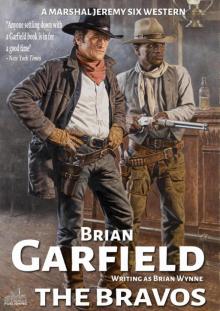 Marshal Jeremy Six #3
Marshal Jeremy Six #3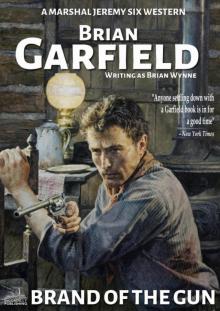 Marshal Jeremy Six #6
Marshal Jeremy Six #6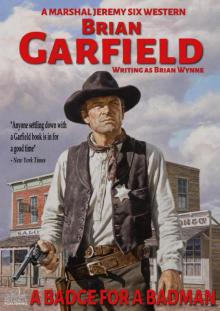 Marshal Jeremy Six #5
Marshal Jeremy Six #5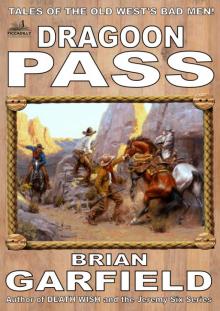 The Outlaws 2
The Outlaws 2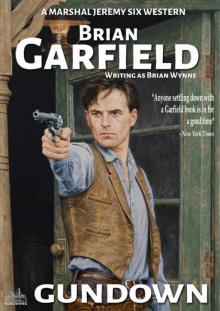 Marshal Jeremy Six #7
Marshal Jeremy Six #7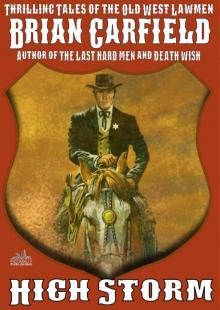 The Lawbringers 4
The Lawbringers 4 Marshal Jeremy Six #4 the Proud Riders
Marshal Jeremy Six #4 the Proud Riders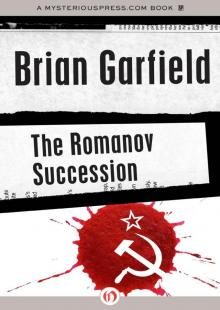 The Romanov succession
The Romanov succession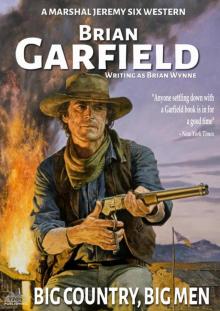 Marshal Jeremy Six #8
Marshal Jeremy Six #8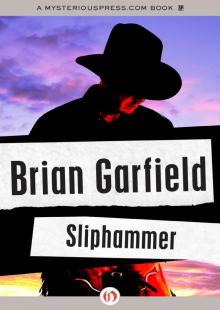 Sliphammer
Sliphammer Line of Succession
Line of Succession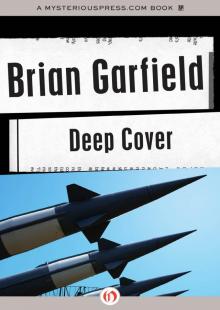 Deep Cover
Deep Cover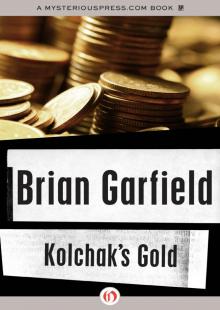 Kolchak's Gold
Kolchak's Gold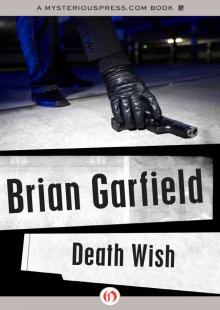 Death Wish
Death Wish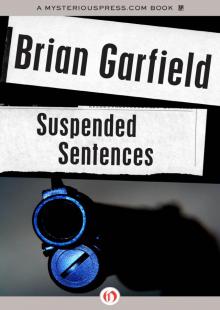 Suspended Sentences
Suspended Sentences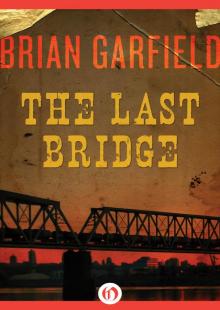 The Last Bridge
The Last Bridge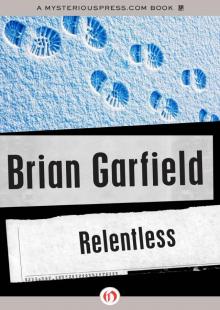 Relentless
Relentless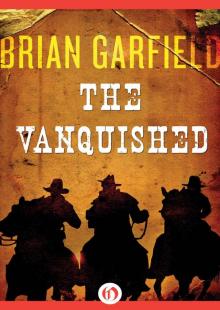 The Vanquished
The Vanquished The Last Hard Men
The Last Hard Men Hit and The Marksman
Hit and The Marksman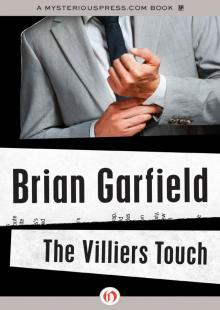 Villiers Touch
Villiers Touch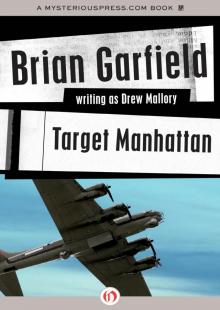 Target Manhattan
Target Manhattan Marchand Woman
Marchand Woman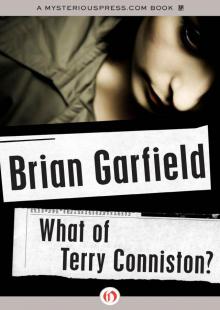 What of Terry Conniston?
What of Terry Conniston?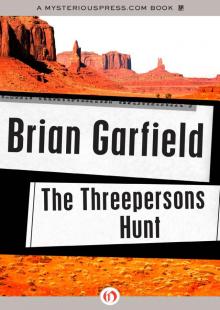 Threepersons Hunt
Threepersons Hunt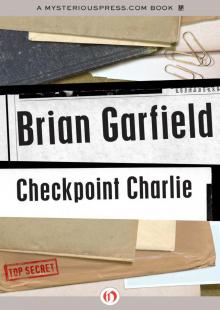 Checkpoint Charlie
Checkpoint Charlie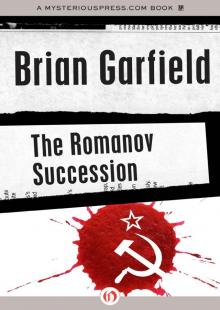 Romanov Succession
Romanov Succession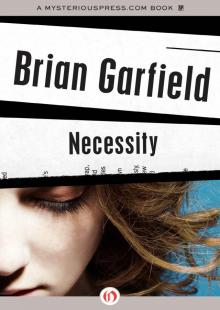 Necessity
Necessity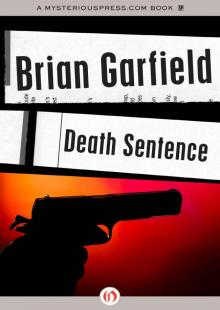 Death Sentence
Death Sentence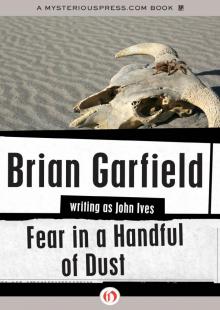 Fear in a Handful of Dust
Fear in a Handful of Dust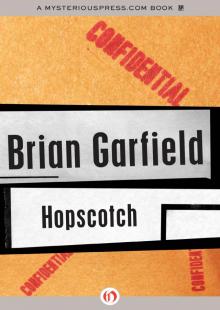 Hopscotch
Hopscotch